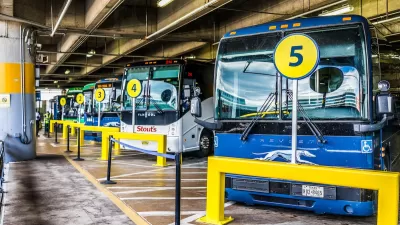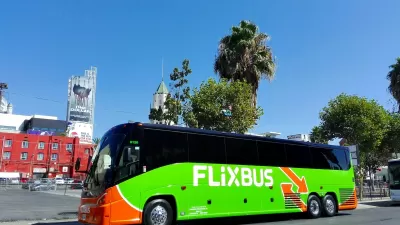Intercity bus travel is no longer the exclusive domain of the down-and-out. The likes of BoltBus and Megabus have, over the past few years, brought a new level of service to the open roads.
"Upstarts Megabus and BoltBus began service in the U.S. in 2006 and 2007, respectively, just in time to serve the iPhone generation. Megabus began in the Chicago area while BoltBus first developed service in the Northeast Corridor between Boston and Washington, D.C. Essentially copycats of each other, Megabus and BoltBus rolled out brand new coaches, appealing liveries, easily navigable websites, relatively low prices, and, not insignificantly, curbside pick-up and drop-off. They endeavored to be everything that the conventional bus companies, such as Greyhound, Trailways and Peter Pan, were not (though BoltBus is actually a subsidiary of Greyhound/Peter Pan)."
"Since 2008, DePaul University’s Chaddick Institute for Metropolitan Development has carved out a singular niche by conducting an annual survey of intercity bus service. The most recent findings, covering the year 2012, revealed an industry on the rise. In 2012 alone, intercity bus service increased 7.5 percent, the second-highest rate on record, after 2008. But this year’s numbers represent a significant increase in gross activities, with 3,879 daily operations at the beginning of 2013, up from 3,608 at the beginning of 2012."
“I think it’s great,” said Cato [Institute's] Randall O’Toole. “Since about 1964, transportation in America has been increasingly…bureaucratized, subsidized, regulated and so on. They’re figuring out ways to rely on shared infrastructure—highways are used by cars, trucks, buses and so forth—and not have a lot of their own infrastructure.”
FULL STORY: Ahead of the Curb

Alabama: Trump Terminates Settlements for Black Communities Harmed By Raw Sewage
Trump deemed the landmark civil rights agreement “illegal DEI and environmental justice policy.”

Study: Maui’s Plan to Convert Vacation Rentals to Long-Term Housing Could Cause Nearly $1 Billion Economic Loss
The plan would reduce visitor accommodation by 25% resulting in 1,900 jobs lost.

Why Should We Subsidize Public Transportation?
Many public transit agencies face financial stress due to rising costs, declining fare revenue, and declining subsidies. Transit advocates must provide a strong business case for increasing public transit funding.

Paris Bike Boom Leads to Steep Drop in Air Pollution
The French city’s air quality has improved dramatically in the past 20 years, coinciding with a growth in cycling.

Why Housing Costs More to Build in California Than in Texas
Hard costs like labor and materials combined with ‘soft’ costs such as permitting make building in the San Francisco Bay Area almost three times as costly as in Texas cities.

San Diego County Sees a Rise in Urban Coyotes
San Diego County experiences a rise in urban coyotes, as sightings become prevalent throughout its urban neighbourhoods and surrounding areas.
Urban Design for Planners 1: Software Tools
This six-course series explores essential urban design concepts using open source software and equips planners with the tools they need to participate fully in the urban design process.
Planning for Universal Design
Learn the tools for implementing Universal Design in planning regulations.
Smith Gee Studio
Alamo Area Metropolitan Planning Organization
City of Santa Clarita
Institute for Housing and Urban Development Studies (IHS)
City of Grandview
Harvard GSD Executive Education
Toledo-Lucas County Plan Commissions
Salt Lake City
NYU Wagner Graduate School of Public Service





























